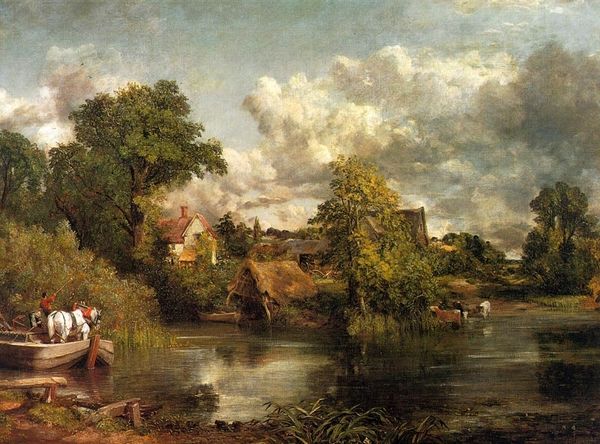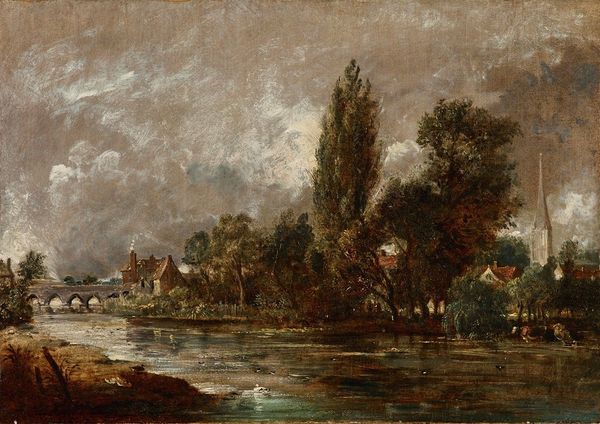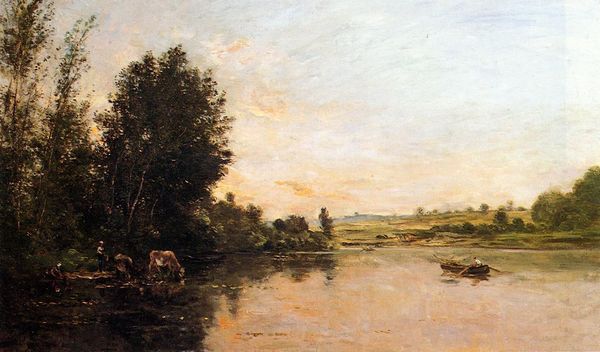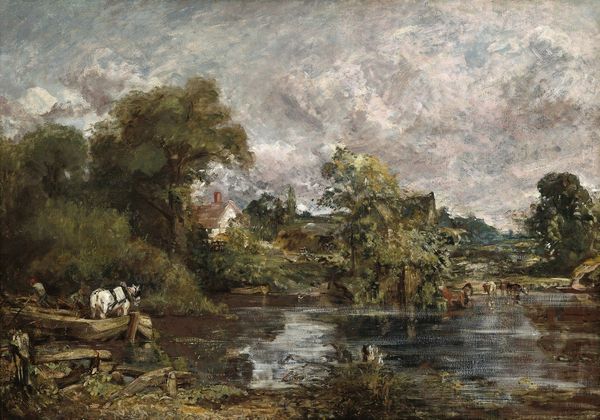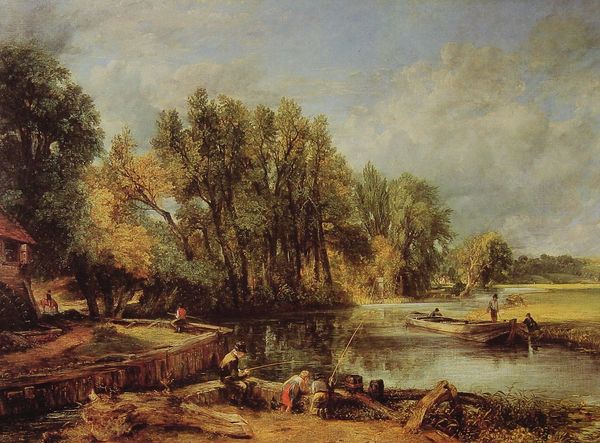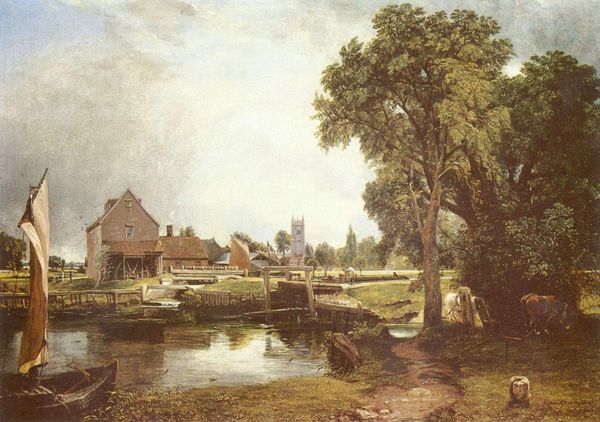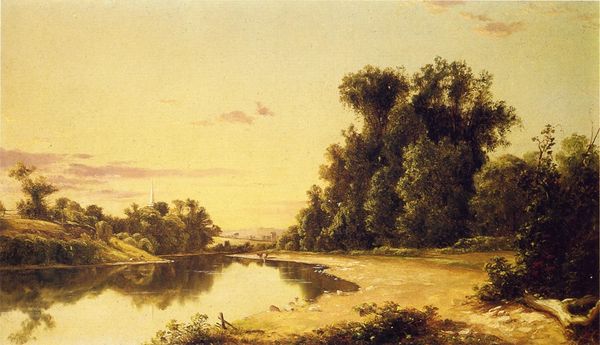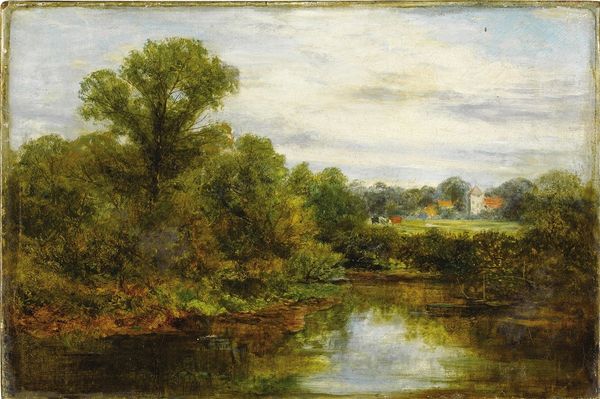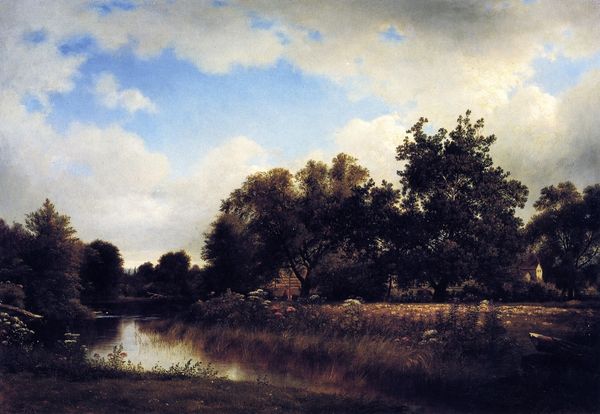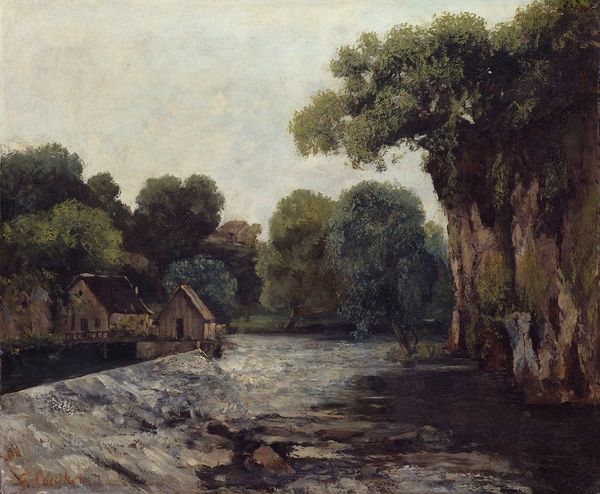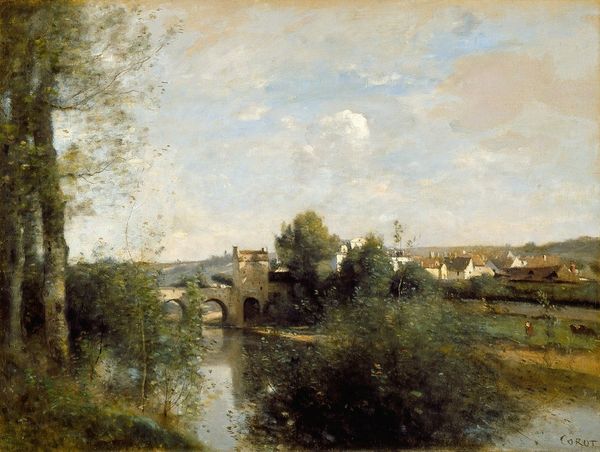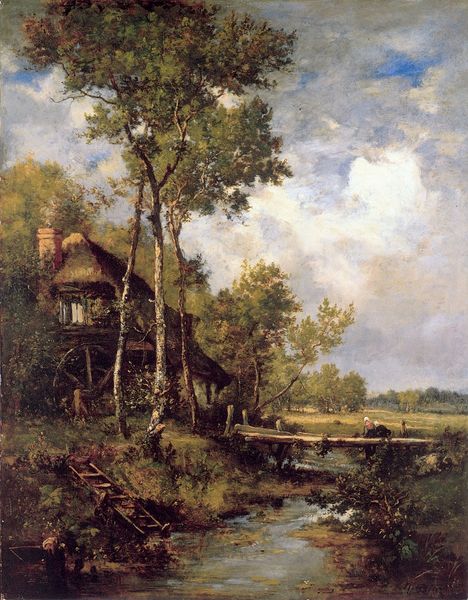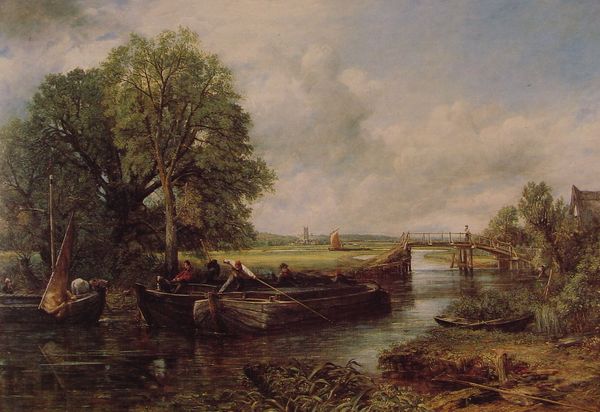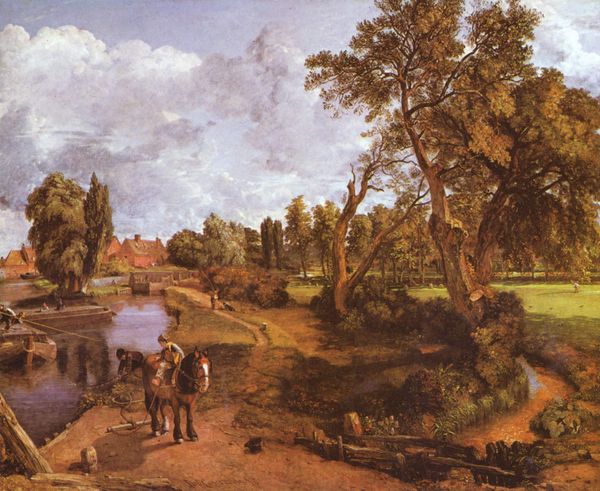
painting, oil-paint
#
tree
#
sky
#
painting
#
oil-paint
#
landscape
#
river
#
oil painting
#
romanticism
#
water
#
cityscape
#
realism
Dimensions: 71 x 91.8 cm
Copyright: Public domain
Editor: Here we have John Constable’s "The Mill Stream," painted around 1815 using oil paint. I find the scene quite serene; the brushstrokes feel very tangible. What draws your eye in this work? Curator: My attention is grabbed by the ways in which Constable uses the very materiality of oil paint to depict a rapidly changing landscape. Consider how he builds up the texture to mimic the foliage – see how the dabs of paint almost become leaves. Think of the process itself. This isn't just observation; it’s an active engagement with nature’s processes through artistic labour. Editor: That's interesting. I was just seeing the idyllic countryside, but you're highlighting the act of painting itself and the labor involved. Curator: Exactly. And consider the social context. This is a time of the burgeoning Industrial Revolution, yet Constable chooses to depict the traditional, slower pace of rural life. Is it a celebration, a critique, or simply an observation of a disappearing way of life made possible by materials derived from the land? Editor: So you’re suggesting that the painting is not just a pretty picture, but also a document of material culture and the social tensions of its time? Curator: Precisely! It speaks volumes about labor, materiality, and consumption, echoing the anxieties and changing landscape of England during that era. Editor: That makes me rethink the entire scene. It's much more than just trees and water, but really, about how it came to be and its relation to the world. Curator: Indeed. By paying attention to the materiality and historical context, we unearth deeper meanings that challenge simple aesthetic appreciation. Editor: I definitely learned to consider not just what's *in* the painting, but also what went *into* making it and how that speaks to its time.
Comments
No comments
Be the first to comment and join the conversation on the ultimate creative platform.
